14
STOPPING PEOPLE FROM GOING TO THE BATHROOM: SOME ADVICE ON TELEVISION AND VIDEO.
AS DOMINANT AS DIGITAL IS THESE days, television is still a very big dog. Yes, YouTube is cool and so are the other video platforms that air brand messages. But if you want a mass-ass audience, broadcast TV is still the thing.
Many of the suggestions from the chapters on general concepting apply to this medium, the virtues of storytelling and simplicity clearly being the most important. The skills you develop while learning to concept and write for a TV commercial will also help you create any kind of video content, whether it's a Facebook post or an in-store display.
Video is probably a more accurate term to use now that commercials have been liberated from the 30- or 60-second restriction. And because commercials no longer appear exclusively on one big screen in the living room, a video can be as long or short as the idea needs it to be.
A lot has changed. What hasn't changed? Your idea must be great.
Great means the same thing here as it does in other media. Is your idea interesting? Would people want to share your idea with their friends? Is it simple? Does it tell a story? Is it branded?
As you read this chapter, I recommend hopping on to YouTube so you can view the spots as they're discussed. (But I've added a few QR codes that'll take you right to selected commercials.)
If your idea isn't great, no amount of production will save it.
The creative's job on a TV spot doesn't end with coming up with the idea and making the storyboard. That's just the beginning of a long process—a process you'll be part of all the way to the finished video. If you sell an “okay” print or outdoor campaign, at least you'll have it out of your hair fairly quickly. Sell a “okay” idea for a commercial and you will suffer for weeks, maybe longer.
The pre-production process for an okay commercial (which can include finding a director, casting, wardrobe, location search, set design and construction), all of that's going to take exactly as long as it does to produce a great commercial. The same boring hours on the set during prelighting. The same tepid coffee in the color-correction and editing suites during post-production. But when you're done, guess what? You'll have an okay, ho-hum, ordinary commercial even your mom will probably mute.
So my advice is, put in the hours now and get to a great idea. Grind it. Make the concept fantastic. Otherwise, you'll have a long, boring, and horrible time to wish you did.
Here are some other things I've learned from my colleagues over the years.
Can you make the imagery do all the work?
TV is a visual medium, and it begs for visual solutions. Me? I happen to prefer visual over verbal approaches in any medium. I'm not the only one. There's a whole school of thought that says, “Don't talk at customers. Tell them a story with pictures. Start with images. Stay with images.”
Yes, there are thousands of great commercials that rely on the audio or voice-over to work. But there's an extra strength to TV concepts so visually powerful viewers understand them even with the sound turned off. This isn't a rule; it doesn't always work. But when it does, it's great. It means you have a simple idea.
One of my favorite all-visual commercials was done for the Sussex Safer Roads Partnership in the UK. It visually demonstrates why wearing a seat belt is important to both driver and family and does it without showing seat belts or even cars.
Shot in gorgeous slow motion, we see a man sitting in his living room pretending to drive as his loving family looks on. When the man's expression implies he's about to be in an accident, his wife and daughter rush to wrap their arms around him—one set of arms across his chest like a shoulder belt, the other across his waist.
Up to this point, the spot is already great but then it roasts your mind when the quiet living room environment explodes as if the room itself is a moving vehicle taking the impact of a crash (Figure 14.2). The super comes up: “Embrace Life. Always wear your seat belt.”
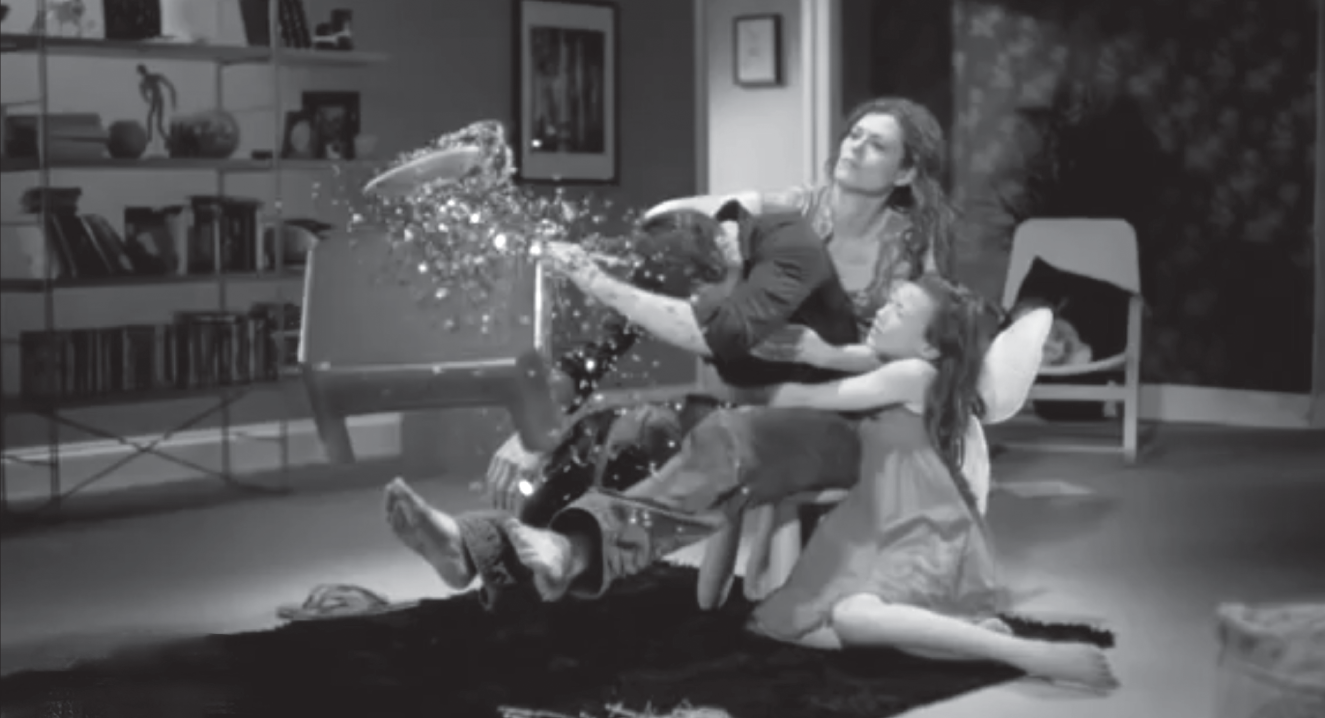
 Figure 14.2 This commercial starts off sweet and playful, then gets weird, and then shocking. A great three-part story structure, all shot on one set. Brilliant, even down to the daughter's wardrobe.
Figure 14.2 This commercial starts off sweet and playful, then gets weird, and then shocking. A great three-part story structure, all shot on one set. Brilliant, even down to the daughter's wardrobe.
The video exploded online as well with a million views in its first two weeks on YouTube, and by three weeks, it had reached 129 countries. Writer/director Daniel Cox said, “We developed ‘Embrace Life' to engage the viewer purely visually and to be seen and understood by all, whoever they are and wherever they lived.”1
This commercial also brings home one of the maxims of television. “As a moving medium,” says author Pete Barry, “TV gives you the freedom to dramatize an idea in ways print cannot.”2
Find one great image and build story into or out of it.
Try looking at your TV assignment as a poster. If you had to settle on a single image to convey your point, what would it be? Sometimes these pivotal images in the story are called key frames.
Once you've found that one image, try spinning a story into or out of it. It's only a guess, but it's possible the Sussex Safer Roads concept (Figure 14.2) started life as a single image for a poster: a wife and daughter's arms form a seat belt around a man's torso. To create the commercial, it's conceivable they wrote the story of what happened before, and after, that poster image.
Print ads in video form can work, but be careful because such ideas don't take full advantage of the medium. Are there exceptions? Of course. I'm thinking of an incredibly simple spot done for Volvo's V50 car. The idea in its print form is here in Figure 14.3.
Volvo's agency (Forsman & Bodenfors) made this still image work marvelously on TV. The commercial opens on a freezing night at a filling station where we see a parka-clad man filling his snowmobile. He watches as a Volvo pulls up, and some guy jumps out wearing surfer shorts, fills his tank, pays, and drives away. The super says the same thing as the print headline: “The new Volvo V50. 1160 km on one tank.”
In the Advertising Concept Book, author Pete Barry calls this kind of thinking the “one-frame goal,” which is a useful and elegant form of reductionism.
The tendency when given the luxury of thirty seconds is to complicate the idea and use too many cuts, voice overs, etc. By definition, the simplest video needs only one cut or camera set-up. This is not a rule you need to place on every project you tackle, but it's useful because it forces you to keep it simple. Capture the basic idea in a single frame, as if it were a poster.3

Figure 14.3 When you have a single still image that telegraphs the idea, you can sometimes stretch it into a cool video.
Think simple.
If you've been given a brief that asks for TV but has next to no budget, good. Because it's going to force you to pare down to the essence of your idea. So valuable is this kind of thinking, you should start here even when your client has a large budget.
This intellectual challenge of working with a small budget (or any constraint) is one of the best mental reset buttons there is. It's such a fruitful place, my friend Ernie Schenck wrote an entire book about it. Check out The Houdini Solution: Put Creativity and Innovation to Work by Thinking Inside the Box.
One last thing. These days, the internet is a very friendly place for what they call “lo-fi” production values (as opposed to high-fidelity). Viewers are used to shaky-cam clips filmed by backyard directors. Depending on the idea, lo-fi can add credibility or authenticity to an idea. So, don't worry about production values. Concentrate on the idea.
Make no mistake, big-ass spots are cool. They take forever to produce and you'll likely be out of town on location or on a set for weeks. But when they finally air? Oh, man. As of this writing, one of the most awarded big spots is one for Volvo created, again, by Forsman & Bodenfors. Obviously, you need to go see this video, but work this good merits a brief description here (Figure 14.4).

 Figure 14.4 You really have to see this demonstration of Volvo's precise steering system. This spot made a lot of us in advertising grind our teeth in envy. (Well, I did anyway.)
Figure 14.4 You really have to see this demonstration of Volvo's precise steering system. This spot made a lot of us in advertising grind our teeth in envy. (Well, I did anyway.)
The camera opens on a head shot of martial arts movie star Jean-Claude Van Damme. It's quiet. The camera pulls back and we see he's perched precariously on the side mirrors of two moving Volvo trucks, one foot on the mirror of one truck, one on the other. His arms are crossed. He's calm. He stares at the camera, we hear his voice.
VAN DAMME'S VO (as internal thoughts): I've had my ups and downs. My fair share of bumpy roads and heavy winds. That's what made me what I am today. Now I stand here before you. What you see is a body crafted to perfection. A pair of legs engineered to defy the laws of physics. And a mindset to master the most epic of splits.
The camera pulls wide, the ethereal track “Only Time” by Enya begins, and the two trucks slowly pull apart from each other. Van Damme maintains his balance on the trucks and ultimately ends up doing, as promised, the most epic of splits. The super comes up quietly.
SUPER: This test was set up to demonstrate the stability and precision of Volvo Dynamic Steering.
There were no special effects, just one monstrously cool take. The commercial went on to win every single award on the planet.
Think in terms of story.
We've already discussed the importance of storytelling and nowhere is it more important than here in video.
A good place for beginners to start is the classic three-act structure. The curtain goes up on an interesting scene where some conflict is already evident. Also evident at a glance is a backstory (hints about who these people are or how things got this way). Things get tense or weird or complicated, usually because of some challenge to the characters. Finally, it's all resolved in an unexpected way and the characters are changed because of it.
This is just my working definition. But storytelling is a many-splendored thing and it's all the surprising varieties of that simple architecture that capture and thrill us. Tarantino turned the linear three-act definition on its head in Pulp Fiction and won an Oscar for best original screenplay. And, as we saw in Chapter 7, nonlinear storytelling is particularly relevant for brands publishing content simultaneously on several platforms. But for beginners, the three-act paradigm serves nicely.
You can see this architecture very clearly in any of the annual Christmas commercials from British department store John Lewis. The commercials are so stinking good, many Brits say they don't feel the holiday season truly begins until they see the spots on the air. Most of them are viewable on YouTube and my favorite is a blockbuster called “Man on the Moon” (Figure 14.5).
The story in this masterpiece, without spoilers, is about a little girl with a telescope who discovers a lonely man living in a small house on the moon. After several unsuccessful attempts to contact him, she sends him a gift from John Lewis that connects them. It ends with a super: “Show someone they're loved this Christmas.”
This commercial also highlights the importance of creating or finding the right music track to enrich the story. “Man on the Moon” plays out to “Half the World Away” by Aurora Aksnes, which amplifies this aching separation of souls. Watch the two-minute commercial and you'll see how the right track can send an excellent concept even higher into orbit.
With this in mind, it's a good idea to keep a list of music tracks you think might help enrich a story. Author Pete Barry says, “Archive it, just as you would a typeface, or a photograph.”4
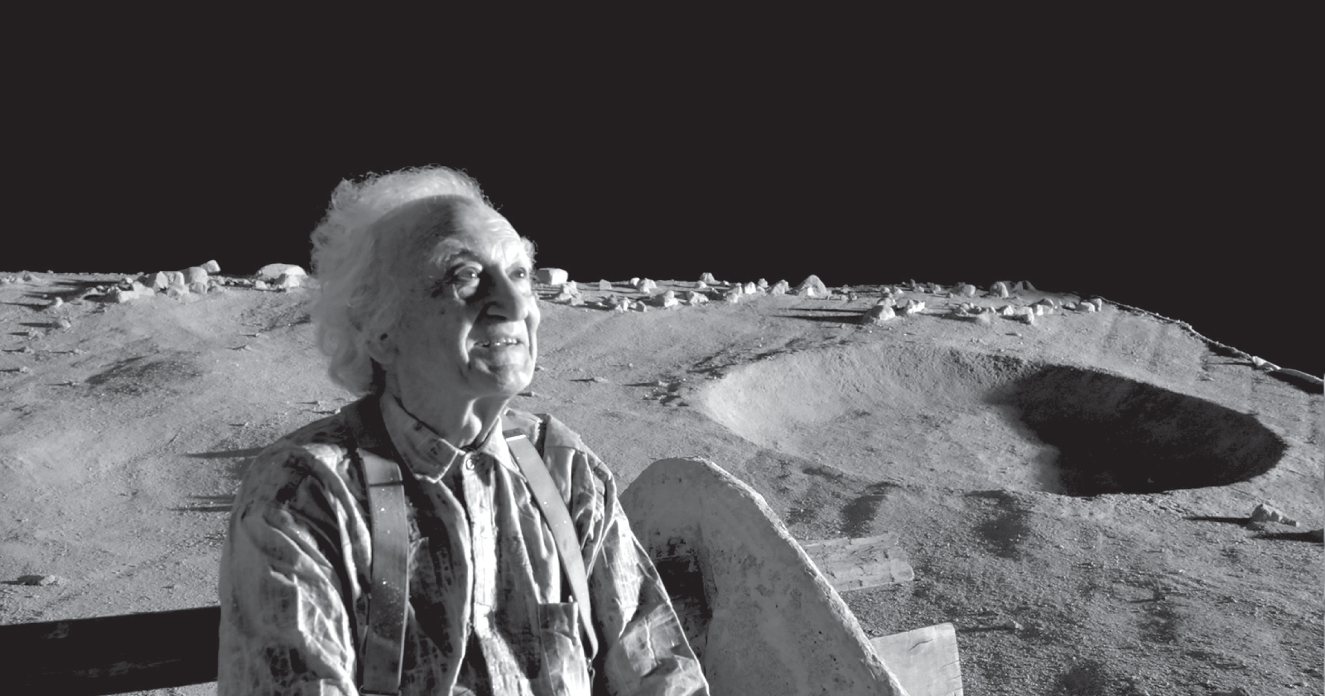
 Figure 14.5 John Lewis's holiday spot, “Man on the Moon.” Like the rest of their annual commercials, a simple story that builds to a delightful ending. Check out their other spots on YouTube.
Figure 14.5 John Lewis's holiday spot, “Man on the Moon.” Like the rest of their annual commercials, a simple story that builds to a delightful ending. Check out their other spots on YouTube.
A good video should entertain throughout its entire length.
Avoid a long buildup to an “unexpected” conclusion, or what we call a “waw-waw” ending. (You know the sound–the pair of muted trumpet notes.)
Once you know a commercial's “unexpected” ending, how many times can you really enjoy watching it? I'm not against surprise in a video's ending, just those gimmicky little switcheroos at the end. Yes, there are always exceptions. When it's done extremely well and there's a real Sixth-Sense-style surprise at the end, snapping your mindset to a different interpretation, that can be pretty great.
For my money, a great spot is a joy to watch from beginning to end, over and over, because there's something new to look for in each frame. This is the kind of commercial that racks up huge views on YouTube. You probably have your favorites. A recent favorite of mine is the one Pringles aired on the Super Bowl 54 featuring Rick and Morty. The spot kicked off a new chip flavor, a refresh of the logo and packaging, and then was extended on social media, even to the convention floor at Comic-Con.
In the Pringles commercial, Rick and Morty get trapped in a Pringles commercial. Inside the commercial we hear the corporate mantra repeated, an ear worm of “Stack new Pringles flavors, make new ones … stack new Pringles flavors, make new ones.” The mantra drills itself into Morty's head and turns him into Mortybot. The commercial was insane (Figure 14.6).
What was smart, though, was the strategy of Pringles co-marketing with “Rick and Morty.” It leveraged both audiences beautifully. Pringles client Rick Maguire said the commercial was created with pure entertainment in mind. “When you see the spot, I hope you'll feel it looks like a ‘Rick and Morty' episode segment featuring Pringles, not a Pringles ad featuring Rick and Morty.”5
In closing, your commercial should, like a TV show, be interesting from start to finish.
Solve the last five seconds.
There's an old Hollywood axiom that says, “Movies are all about their last 20 minutes.” Writer/creative director David Fowler reiterates that advice for short-form content and commercials in The Creative Companion:
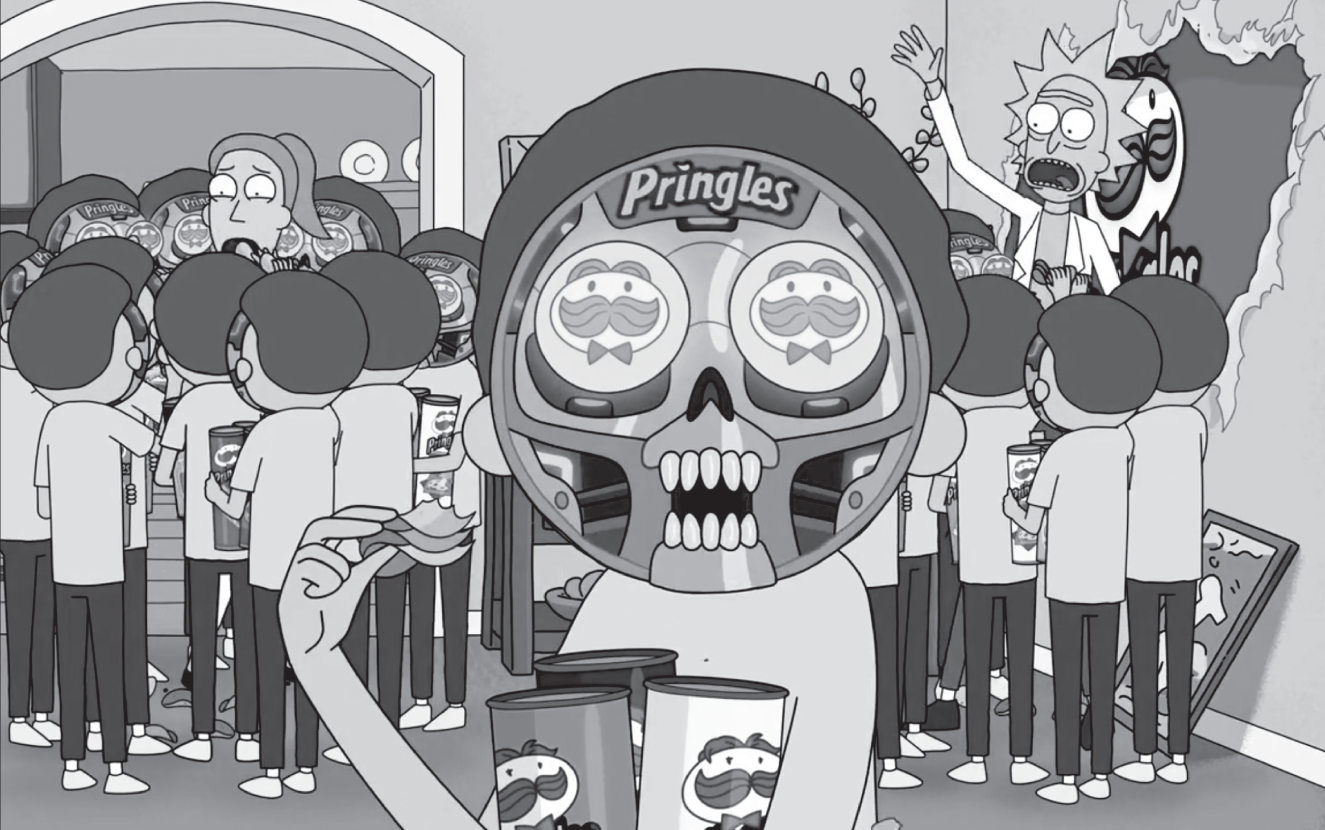
 Figure 14.6 Pringles rocked Super Bowl 54 with a stupid and fun commercial that had entertaining bits happening from beginning to end. Listen for how Morty pronounces jalapeno.
Figure 14.6 Pringles rocked Super Bowl 54 with a stupid and fun commercial that had entertaining bits happening from beginning to end. Listen for how Morty pronounces jalapeno.
The most important part of any television advertisement is its conclusion, the last five seconds. That's the part that resolves, explains, summarizes, or excuses the preceding twenty-five seconds. If you're not clear about the last five seconds, you're not clear about anything, because that's where your premise gets pounded home. Try to write the last five seconds first. If you can't, you don't need to write a spot, you need to [back up and] develop a premise for a spot.6
Another Hollywood axiom seems appropriate here: audiences will forgive almost anything in the first half of a movie and almost nothing in the second. (See: Thrones, Game of.)
Moral: you must stick the landing.
Concept for one screen, design for big screens, and optimize for small.
That advice about audiences is from Joshua Baze, a respected digital strategist. He goes on to say, “People consume media on big screens and snack on media in small screens.”
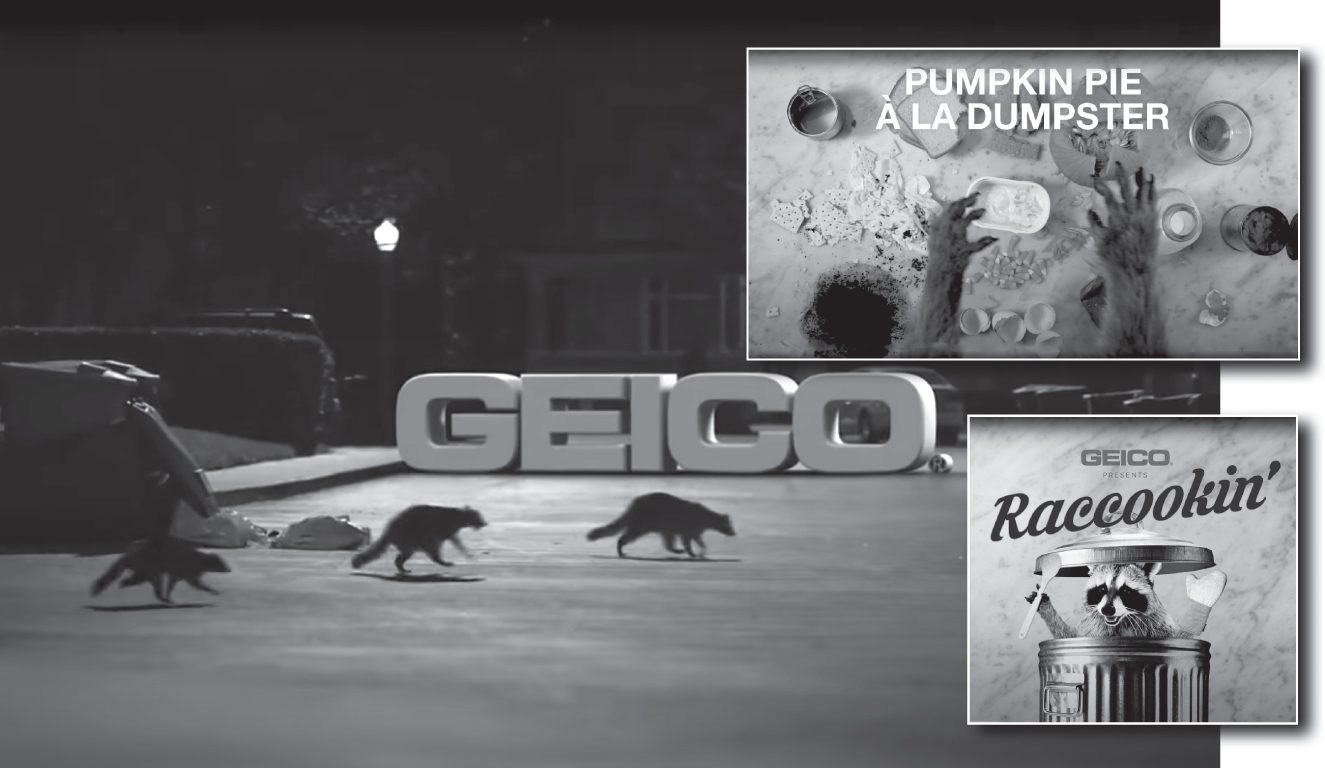
 Figure 14.7 First, GEICO aired their fabulous “Raccoons” commercial on television. They followed that with great branded content for smaller screens: the raccoons' hilarious cooking-with-garbage show appeared in social media.
Figure 14.7 First, GEICO aired their fabulous “Raccoons” commercial on television. They followed that with great branded content for smaller screens: the raccoons' hilarious cooking-with-garbage show appeared in social media.
An absolutely fabulous example of big-screen TV content paired with ancillary content online is GEICO's “Raccoons” spot by Ken Marcus and Sean Riley of The Martin Agency (Figure 14.7).
On television, the commercial showed a group of three raccoons making a midnight raid on a suburban trash can. As one raccoon discovers some particularly gross things to eat, he tries to convince his buddies to taste how bad it is. The voice-over comes in: “If you taste something bad, you want someone else to try it. It's what you do. If you want to save 15 percent or more on car insurance, you switch to GEICO. It's what you do.”
The team could have finished making this commercial and left the story to play out its short life on television. But then they took these same chatty raccoons online in an extremely low-budget series of “cooking shows,” ostensibly produced by the dumpster-diving critters.* With recipes like “Week-Old Chicken Alfredo” and “Pepperoni Garbage Bread,” the videos moved the narrative to social for a longer life online, but packaged it differently for smaller screens.
Business writer Pascal-Emmanuel Gobry explained the repackaging: “[C]onsumers … love TV and they love the internet. [But] they love TV as TV and they love the internet as the internet… . TV is a fundamentally lean-back experience while the internet is fundamentally lean-forward. They may both be bright rectangles, but they perform different functions.”7
Don't show what you're saying, or say what you're showing.
This idea, discussed in print advertising (“see-say ads”), has a counterpart here in broadcast, with a few twists.
With video, you have two tracks of information occurring simultaneously: audio and visual. To some degree, they have to match up. If either track wanders too far afield of the other, viewers won't know which to attend to; they'll lose interest and begin feeling around in the couch for change. However, you don't want to have the voice-over and video so joined at the hip that viewers hear again what they're seeing on screen.
It's better to have one track complete the other, or play off the other, just as you do in print. That 1 + 1 = 3 thing works to great effect here in television. The words and the visuals can supply slightly different pieces of information, tracks viewers can integrate in their heads.
Sometimes you can add creative tension between what is seen and what is heard by giving the copy an unexpected tone, perhaps of irony or understatement. For instance, I remember a Reebok spot featuring a popular Dallas Cowboy running back violently crashing into opposing players. What you heard, though, was the player's voice-over quietly musing about how football “allows you to meet so many people.”
Write sparely.
Do not carpet your spot with wall-to-wall copy. Leave plenty of breathing room. After you've written your script, get out a big, scary knife, like the one in Halloween 4, and cut mercilessly. You'll be glad you did come editing time. You'll find you need space to let those wonderful moments on film just happen by themselves without words jabbering in your ear.
One of the commercials from Weiden+Kennedy's long-running Old Spice campaign uses just 27 words and the lack of verbiage lets the story play out like a movie, not a commercial.
We open in a darkened room with two detectives in the middle of what appears to be a long interrogation. The weary lead detective says, “Listen, we know it's you. The APB describes a naked sudsy guy playing a piano made of suds.”
The camera cuts around to the scene in Figure 14.8 and there's a wonderful pause here that allows for Naked Sudsy Guy to play a few notes. The pause is perfect. The detective rolls his eyes and goes, “Come on, man!” Unmoved, Naked Sudsy Guy plays a few more notes, and then an envelope labeled “Blackmail” slides (via suds) from Naked Sudsy Guy across the room to the detective. He picks it up, pulls out what seems to be a photograph, and quickly ends the interview. “Smells like we got the wrong guy.” Cut to a package shot, where we hear the iconic eight-note Old Spice musical sting, and the tagline appears: “Smell ’Em Who's Boss.”
Wieden's typically thorough job takes this narrative style online. If you Google “What Is Swagger from Old Spice?” the top answer is “Swagger Body Wash's refreshing lather drop-kicks dirt and odor, does a clothesline on them, then slams them with a folding chair.”
It's worth commenting here, too, on the tone of the copywriting in both the television and online. One of W+K's top writers on Old Spice, Craig Allen, said, “Weird doesn't work for every brand—and it definitely doesn't work when handled improperly. Dropping weird moments into otherwise normal situations is why they work so well … odd moments, grounded in reality. Weird works when it's confident.”8
For videos under 15 seconds, do you have to write anything?
A short video is a different animal than the 30-second spots we typically see on television. You'll have no time for a slow build. With four to five seconds already set aside for the wrap-up and client logo, you're looking at less than 10 very skinny seconds to unpack your show, put it on, and hit the showers.
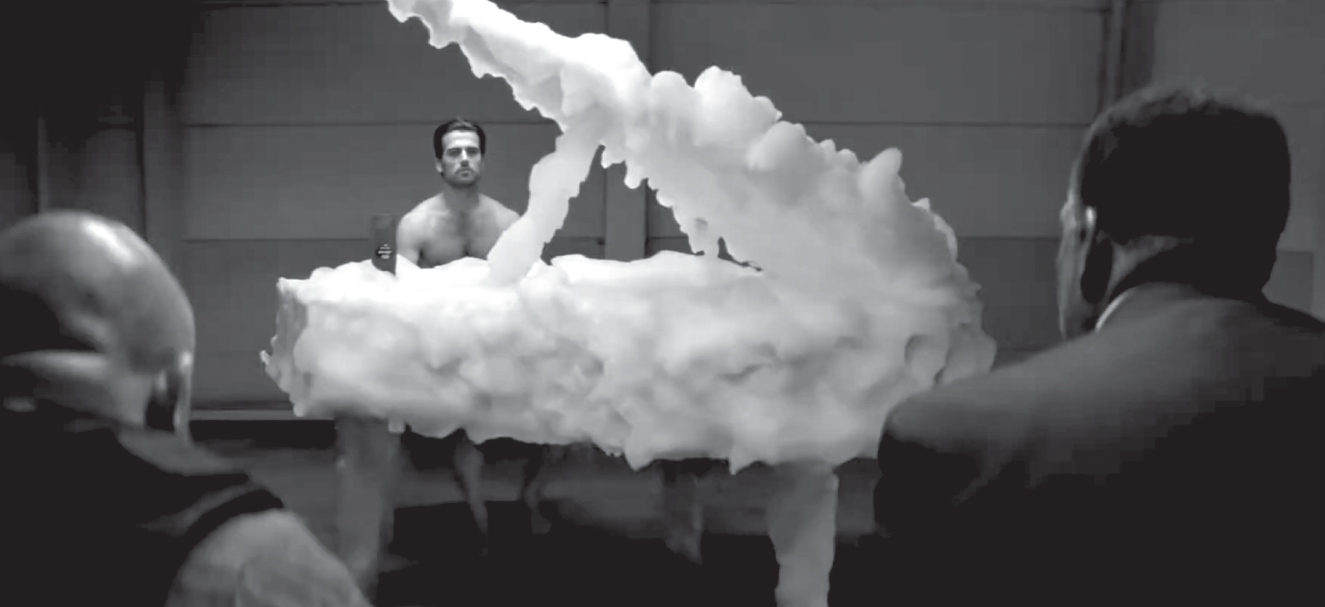
Figure 14.8 Imagine having a job where you get paid to think up stuff like Naked Sudsy Guy in an interrogation room.
So, strip your short video concepts down to the bones. And then strip again down to the marrow. Lock off the camera and keep it to one scene if you can.
I remember a 15-second Toyota spot with one scene. The camera is locked down on an empty red Toyota sitting on a quiet suburban street. Suddenly a barking dog comes sprinting down the driveway from the house in the background and slams into the parked car's rear end. A super comes up: “Looks Fast.” A pause and then the rest of the type appears: “The New Celica Action Package.”
If you're doing dialogue, do it extremely well.
It sounds stupid when I say it, but if you're writing words meant to be spoken, they should sound like people speaking. And doing this is tougher than one would think.
One of the problems you face with dialogue is weaving a sales message into the natural flow of conversation. (“Can I have another one of those Flavor-rific brownies, Mom, now with one-third larger chocolate bits?”) Don't do it that way. It's better to let a voice-over do this kind of heavy lifting.
Remember also that real people often speak in sentence fragments. Little bits of talk. Single words here and there. Thoughts that start, then restart. Note also, people will often step on the end of each other's lines or complete the other's sentences.
Just as the eye isn't fooled by cheap special effects, the ear picks up even slight divergences from real speech. Be careful with dialogue. Encouraging talent to ad-lib where it feels natural may be a good way to help get to an authentic sound.
Study the reels.
To learn any language, experts say you need to immerse yourself in that language. This is true for the language of video as well, not to mention copywriting. I tell my copywriting students to pore over the famous copywriting examples in big ad competitions like the One Show and D&AD. It's only after you read a couple of thousand perfect examples does the deeper architecture of the craft begin to sink in.
It's the same with learning the architecture of great short-form video. You need to start watching tons of award-winning commercials. Although the videos may all seem different, they share a condensed writing and storytelling style you have to immerse yourself in to speak it fluently.
There's another good reason to study award show reels and the reels of today's A-list commercial directors. In Chew With Your Mind Open, my friend Cameron Day says, “Assemble a director list and keep notes about what the directors you've chosen bring to the idea. Look at as many reels as possible. Soak up every ounce of wisdom you can from your agency producers and vendors. They can be great mentors and know more about film, audio, and editing than anyone else in the building.”9

I hope these few pieces of advice will be enough to help frame your thinking as you begin working in this cool medium. Its high visibility and public forum make it one of the most exciting media we work in. Every time I got a television assignment, I worked my tail off because I knew a lot of people would see it. It was a pressure I found quite nerve-wracking.
Which cuts nicely to our next chapter. (Fade to black.)
NOTES
- 1. Daniel Cox, “Embrace Life,” August 12, 2011, http://theinspirationroom.com/daily/2010/embrace-life/.
- 2. Pete Barry, The Advertising Concept Book (London: Thames & Hudson, 2008), 170.
- 3. Pete Barry, The Advertising Concept Book, 165.
- 4. Pete Barry, The Advertising Concept Book, 164.
- 5. Kyle O’Brien, “How Pringles Trapped Rick and Morty in a Super Bowl Ad.” The Drum, January 28, 2020, https://www.thedrum.com/news/2020/01/28/how-pringles-trapped-rick-and-morty-super-bowl-ad.
- 6. David Fowler, The Creative Companion (New York: Ogilvy, 2003), 31.
- 7. Pascal-Emmanuel Gobry, Business Insider, August 11, 2011, http://wwwbusinessinsider.com/facebook-tv-2011–1#ixzz1Uis7rzWP.
- 8. Fast Company, “ This Ad Proves That Commercials Need to Get Weird Again,” December 15, 2020, https://www.fastcompany.com/90586284/this-ad-proves-that-commercials-need-to-get-weird-again.
- 9. Cameron Day, Chew With Your Mind Open: An Advertising Survival Guide (Austin: Sticky Intellect, 2021), 173.
- * Message to the author from Sean Riley: “We shot and produced those Racookin' videos ourselves at the agency. All based on tasty food videos which were popular at the time. Copywriter on the series was Ryan Durr, but I got to do the arm puppetry myself. I have to say it was the most fun I ever had in advertising. We had a food stylist too, of course, but in this case her job was to make the food look as shitty as possible.”
